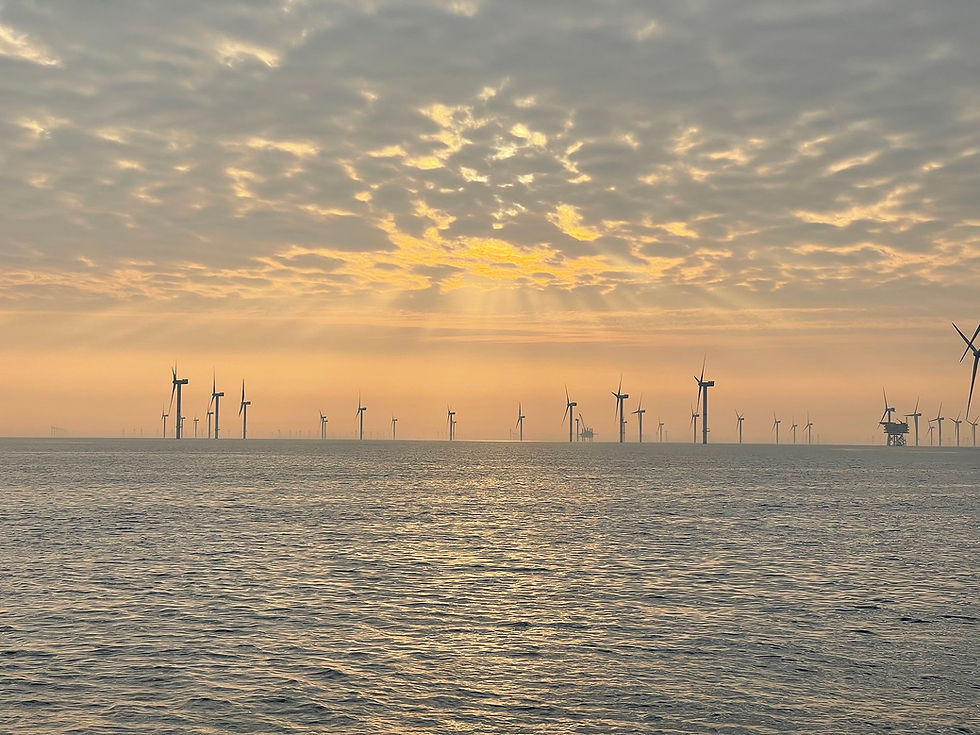Making Good Use of the Inflation Reduction Act by Taking Climate Action
- EPIC Staff
- Feb 28, 2023
- 3 min read
Updated: Mar 14, 2023
The 2022 Inflation Reduction Act (IRA) is the nation’s largest-ever investment in climate action. While the IRA certainly has some fundamental climate-related shortcomings, it does provide individuals, organizations, companies, state, local, and tribal governments a range of financial incentives to shrink their carbon footprint and overall greenhouse gas (GHG) emissions. Many of the incentives of the IRA are just starting to apply.

On a macro scale, we need grid-connected renewable energy to decarbonize our communities. The passage of the IRA marked a significant shift towards a more climate-friendly nation with heavy investment in renewable energy infrastructure, of which the North Coast may be a significant beneficiary. Among the many provisions of the IRA are production and investment tax credits for solar and offshore wind energy development.
The growth of locally-produced renewable energy, such as solar and wind, will help us wane off the methane-powered Humboldt Bay Generating Station. These renewable energy investments also look to be a potent stimulant of economic growth and, as President Biden has often flouted, will create “Jobs Jobs Jobs.” Those jobs will likely be good-paying, middle-class jobs that the North Coast desperately needs.

To decarbonize locally, however, our community will need to stop using fossil fuels and shift toward electrification, including for our home appliances. Gas appliances—from dryers to furnaces to stoves—are “mini fossil fuel plants,” to borrow from Dr. Leah Stokes, associate professor at the University of California, Santa Barbara. The next time a gas appliance breaks down in your household, it might be a good idea to opt for an electric replacement, and the IRA is here to help.
The law creates significant rebates and tax credits for electrified appliances and home solarization. For example, purchasing non-gas burning appliances, such as induction stovetops, can result in a tax credit of up to $840, depending on income. Similarly, replacing old gas-powered heating systems with electric heat pumps can provide credits of up to 30% of purchasing price with a cap of $2,000; other substantial rebates are available to low-income households. The IRA also extended federal tax incentive programs for solar energy by lengthening the Residential Clean Energy Credit, which shaves off around 30% of the price of new photovoltaic (PV) systems installed throughout 2034.
In the transportation sector, which makes up roughly 50% of Humboldt’s overall GHG emissions, the IRA does little to change America’s driving culture. Instead, it primarily incentivizes the adoption of personal electric vehicles (EVs) by providing tax credits of up to $7,500 per new vehicle and $4,000 for preowned cars, depending on make, model, and battery capacity. This could lower the overall sticker price, making EVs far more cost competitive with new gasoline-powered vehicles, even without factoring in long-term savings derived from the low operating cost of electric engines. It’s also worth noting that incentivization measures throughout the supply chain will further drive down the price of EVs for consumers in the long term.
It’s not just individuals that should consider taking advantage of provisions within the IRA. We are past due on solarizing our local schools, government offices, and public administration buildings. Especially in rural areas where the power goes out frequently, solar improvements are critical for building energy resiliency.

Complementary to this solar buildout, we should electrify our government car fleets. Just last December, it was revealed that the City of Eureka’s municipal police car order consisted entirely of gas hogs—with a baffling price tag of roughly $69,000 per vehicle. Although these modifications would only address a marginal fraction of our overall transportation-related GHG emissions, electrifying government fleets would not only potentially reduce long-term costs associated with maintenance (there are only around 20 moving parts in an electric engine, compared to the 2,000+ in an internal combustion engine), but also provide a strong foundation for further resilience-building efforts. If police officers can accomplish their jobs in EVs that are better for the environment than gas-powered cars while saving the department thousands of dollars in maintenance, that’s a win-win. It’s also more than just a financially wise decision or climate action—it’s a matter of public entities being good community role models.


Comments